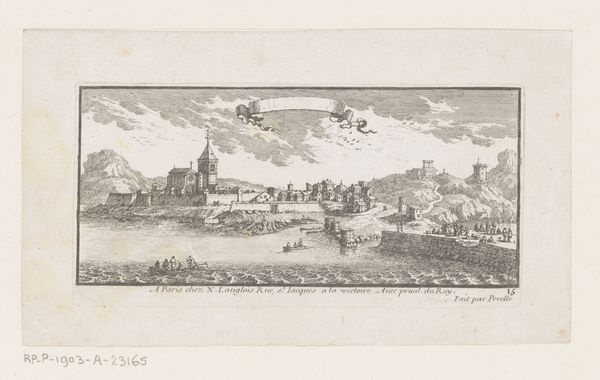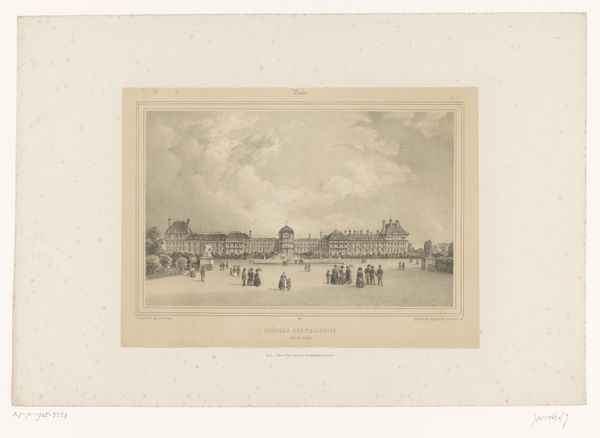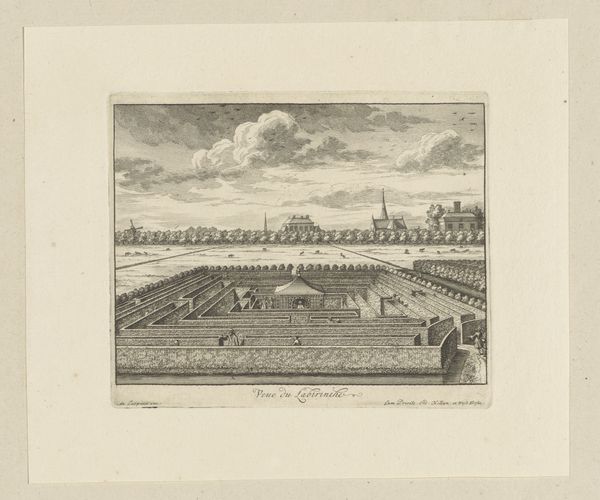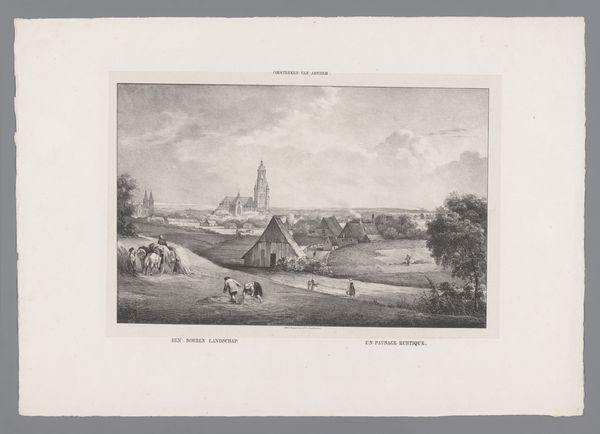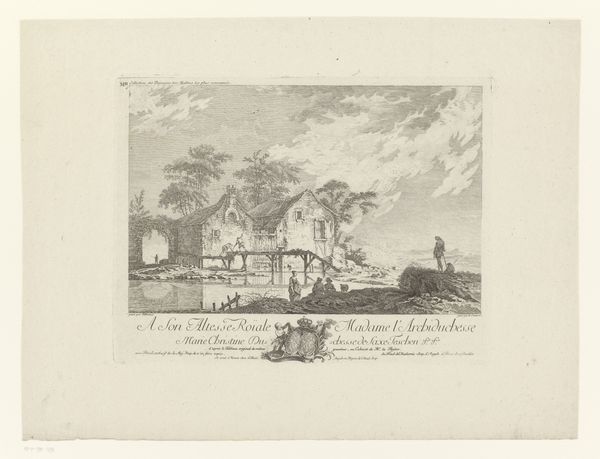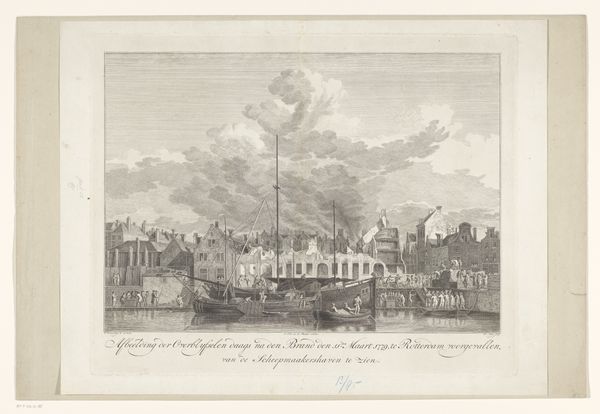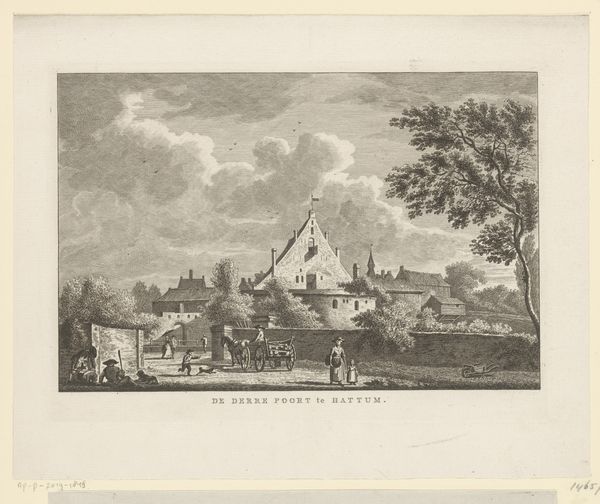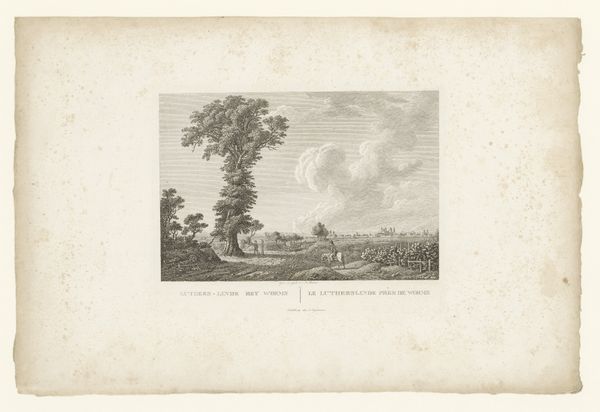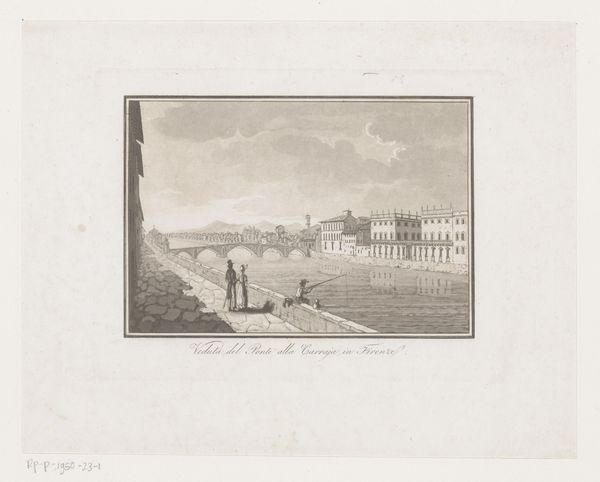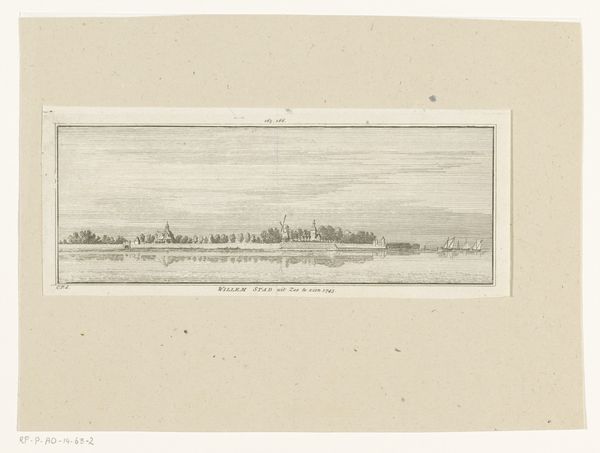
print, paper, engraving
#
pencil drawn
#
neoclacissism
# print
#
landscape
#
paper
#
cityscape
#
engraving
Dimensions: height 267 mm, width 354 mm
Copyright: Rijks Museum: Open Domain
Curator: Here we have Jules David’s "View of the H\u00f4tel du Garde-Meuble from the Champs-\u00c9lys\u00e9es," created in 1828. It's a cityscape print on paper housed here at the Rijksmuseum. Editor: It has a rather tranquil quality, even though it’s depicting a bustling urban environment. The subdued greyscale tones soften what could be quite imposing architecture. Curator: Observe how David structures the composition. The H\u00f4tel dominates the horizon, asserting its neoclassical rigor, with those parallel colonnades commanding your eye. This contrasts with the dynamism introduced by the carriages and figures in the foreground, creating a visual rhythm that embodies early 19th-century Parisian life. Editor: Absolutely. I'm also drawn to the method by which such multiples of this work were created, particularly as this print gives us a window into the lives of Parisians from every rung on the social ladder. Its circulation made this moment accessible far beyond the physical space depicted. I wonder about the artisans who etched the plate, how they shaped the narrative with each cut, and who these prints were produced to appeal to. Curator: Intriguing! Let's consider the print’s relationship to Neoclassicism and its inherent social dimensions. This carefully structured, idealized view speaks to order, rationality, and an almost imperial aspiration—principles central to that movement. It mirrors how power envisioned itself at the time, a spectacle of grand civic virtue. Editor: While appreciating that perspective, it is also fruitful to examine this print as evidence of early industrial image-making. Engraving allowed a kind of mass consumption of this 'ideal' to reach potentially revolutionary hands! The image and its mechanical origins reflect the economic currents of the time as well. Curator: Indeed! It serves as a lens, refracting notions of power, representation, and perhaps even accessibility of "high art." Editor: I concur. Considering how this print mediated and materialized a Parisian ideal truly brings the work to life for me.
Comments
No comments
Be the first to comment and join the conversation on the ultimate creative platform.
